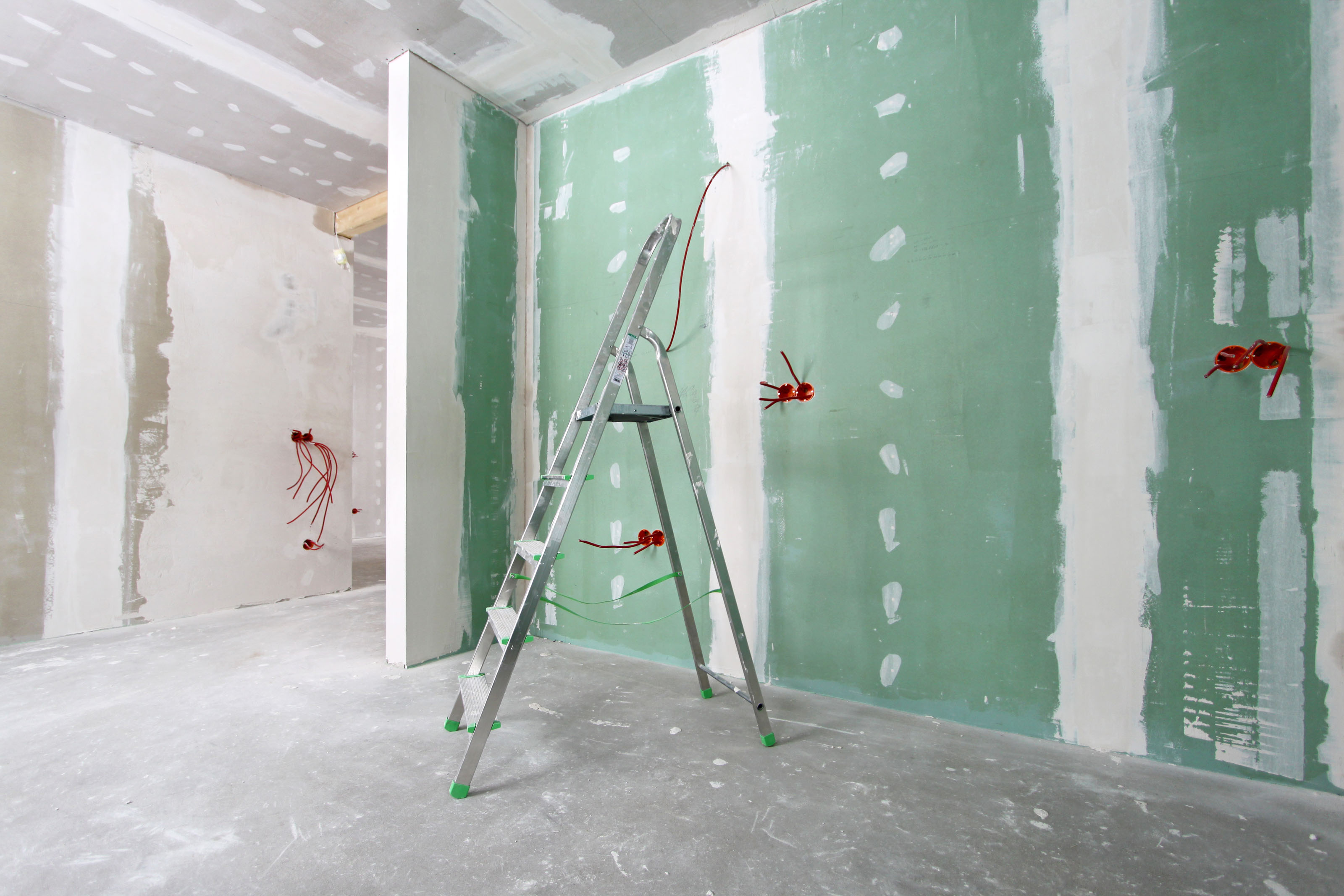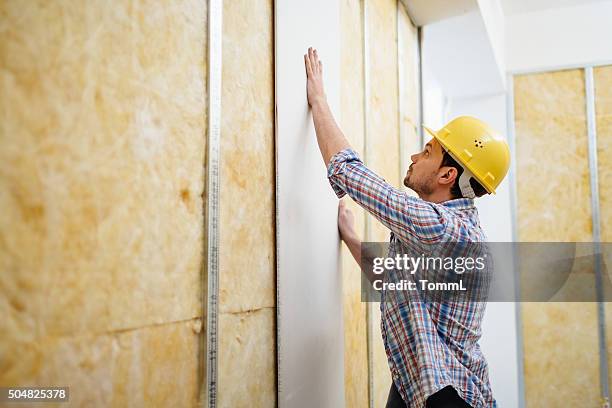Advanced Techniques for Effective Drywall Installation
Advanced Techniques for Effective Drywall Installation
Blog Article
The Ultimate Step-by-Step Guide to Drywall Installation: From Prep to Painting
Drywall installation is an important action in any type of building or remodelling project, and it requires careful focus to information and exact implementation. In this detailed guide, we will stroll you with each step of the process, from the initial preparation to the last paint. From gathering the needed tools and products to gauging and reducing the drywall panels, we will offer you with succinct and clear directions to guarantee a successful installment. That's not all-- we will certainly likewise cover the crucial actions of securing the panels, ending up the surfaces, and attaining a perfect paint work. Whether you're an experienced DIY lover or a novice home owner, this overview is your go-to source for attaining specialist outcomes.
Gather Necessary Tools and Materials
To start the drywall installment process, it is necessary to gather all the required devices and products in a specialist manner. Having the right tools and materials not only makes sure a efficient and smooth setup yet likewise adds to the total top quality and sturdiness of the completed task.
Primarily, you will certainly need a measuring tape to accurately determine the measurements of the wall surfaces and ceilings. This will enable you to cut the drywall sheets to the right dimension, lessening waste. An energy blade with sharp blades is critical for specific and tidy cuts (drywall repair). In addition, a T-square can aid you attain square and straight cuts.
Next, you will certainly require a cordless drill or screw gun to safeguard the drywall sheets to the studs. See to it to have an enough number of drywall screws available. These screws should be long sufficient to permeate the drywall and safely anchor it to the studs.
Various other necessary tools consist of a drywall lift or a pair of assisting hands to assist with placing and holding the drywall sheets in position. A drywall T-square can be useful for marking reducing lines, while a rasp or sanding block will permit you to smooth any type of rough sides.
Finally, collect all the needed security equipment, such as shatterproof glass, handwear covers, and a dirt mask, to shield on your own during the installment process.
Prepare the Work Area
Before starting the drywall installation process, it is essential to properly prepare the workspace to make certain a effective and smooth installation. This step is crucial as it sets the structure for the entire job, making it possible for the installation to continue flawlessly.
To start, it is necessary to clear the work location of any furniture, designs, or various other items that may block the installment procedure. This includes eliminating wall surface hangings, covering furniture, and securing the floorings with drop fabrics or plastic sheets. Furthermore, make certain that the area is well-ventilated by opening windows or utilizing followers to avoid the build-up of dust and fumes.
Following, check the wall surfaces and ceilings for any kind of existing damages or irregularities. Deal with any type of problems such as fractures, openings, or unequal surface areas prior to waging the installation. This might include patching up holes, fining sand down rough locations, or applying a skim layer to level the surface area.
Last but not least, step and mark the design of the drywall sheets on the ceilings and wall surfaces. This will certainly act as an overview during the setup process and assistance make sure precise placement of the panels (drywall repair). Take into consideration any type of outlets, switches, or other components that might need special attention
Step and Cut the Drywall Panels
Accurate measurements and specific cuts are vital when dealing with drywall panels during the installation procedure. Prior to reducing the drywall, it is essential to measure the measurements of the location where the panels will be installed. Make use of a determining tape to figure out the height and size of each section, and make certain to represent any electrical outlets or components that may call for customized cuts.
Once the dimensions are taken, transfer them onto the drywall panels noting or using a pencil device. Verify the measurements to make certain accuracy prior to waging the reducing process. It is recommended to make use of a T-square or straight edge to develop straight lines for cutting.

When cutting drywall to shield yourself from debris,Keep in mind to use safety goggles and dust masks. Furthermore, it is suggested to have someone help you in holding the panels throughout the reducing procedure to make certain stability and accuracy
Install and Secure the Drywall Panels
Proper setup and safe add-on of the drywall panels is crucial for a long lasting and effective coating. To start, carefully lift the drywall panel into location, ensuring it lines up with the marked guidelines on the wall. Use a drywall lift or enlist the help of another person to hold the panel ready while you protect it. Beginning with one edge, insert drywall screws right into the panel, driving them via the drywall and right into the wall surface studs. Be certain to area the screws uniformly, around every 16 inches along the edges and every 12 inches in the. It is necessary to stay clear of over-tightening the screws, as this can create the drywall to break or break. Repeat this process for each and every panel, guaranteeing they fit firmly with each other without any kind of spaces. When all the panels are installed, inspect Edmonton drywallers the surface area for any type of extending screws or flaws. Make use of a screwdriver or pierce to sink any sticking out screws somewhat below the surface area. Lastly, apply drywall joint substance to cover the seams between the panels and allow it completely dry totally before continuing to the next action.

End Up and Paint the Drywall Surfaces
To achieve a professional and refined surface, the following action after installing and protecting the drywall panels is to carefully complete and repaint the drywall surface areas. Ending up the drywall involves a number of actions to ensure a smooth and seamless look. Any visible joints or joints in between the drywall panels must be covered with joint compound and tape. This compound is put on the joints, ravelled, and left to dry. When completely dry, it is fined sand down to produce a seamless surface area. Next, any type of flaws or irregular locations on the drywall are loaded with joint compound and sanded down until smooth. After the drywall is effectively finished, it is time to repaint. Before painting, it is necessary to prime the drywall surfaces to guarantee appropriate attachment and a smooth coating. As soon as the guide is completely dry, the drywall can be painted using a roller or brush, relying on the wanted coating. Numerous layers may be required to accomplish the preferred color and coverage. It is very important to enable each coat to dry before using the following. Finally, once the paint is dry, the drywall surface areas are all set to be appreciated.
Conclusion

From collecting the essential tools and materials to gauging and reducing the drywall panels, we will supply you with clear and concise directions to make certain a successful setup.Accurate cuts and precise dimensions are essential when working with drywall panels throughout the installment procedure.Proper setup and safe attachment of the drywall panels is vital for a successful and durable surface. Starting from one corner, insert drywall screws right into the panel, driving them via the drywall and right into the wall surface studs.To attain a polished and professional surface, the following step after mounting and safeguarding the drywall panels is to thoroughly complete and repaint the drywall surface areas.
Report this page